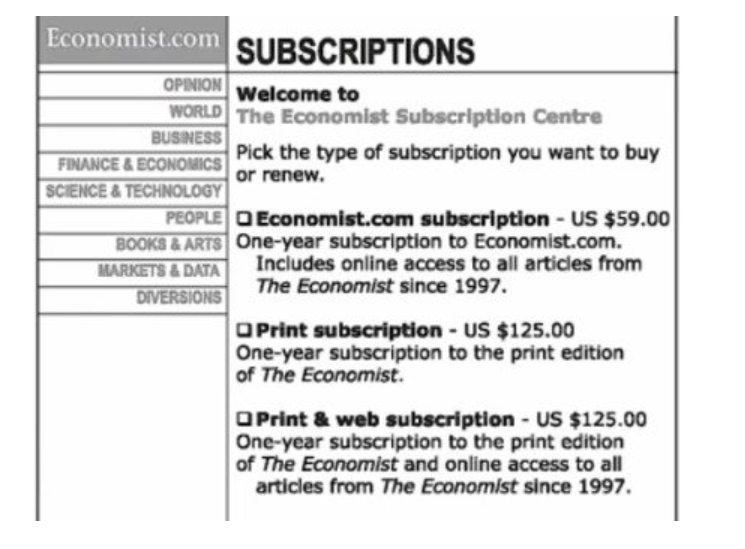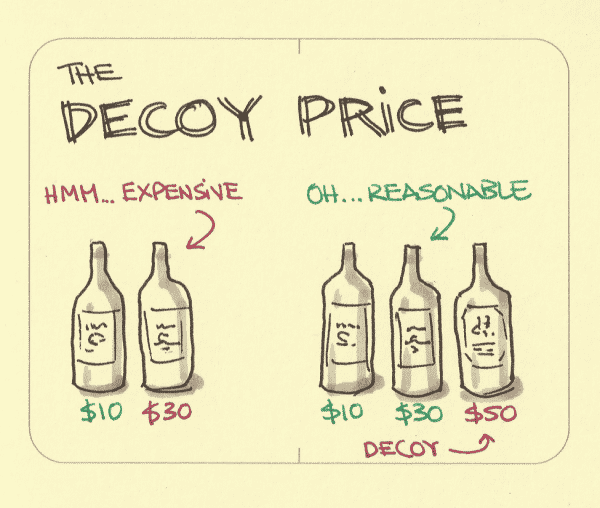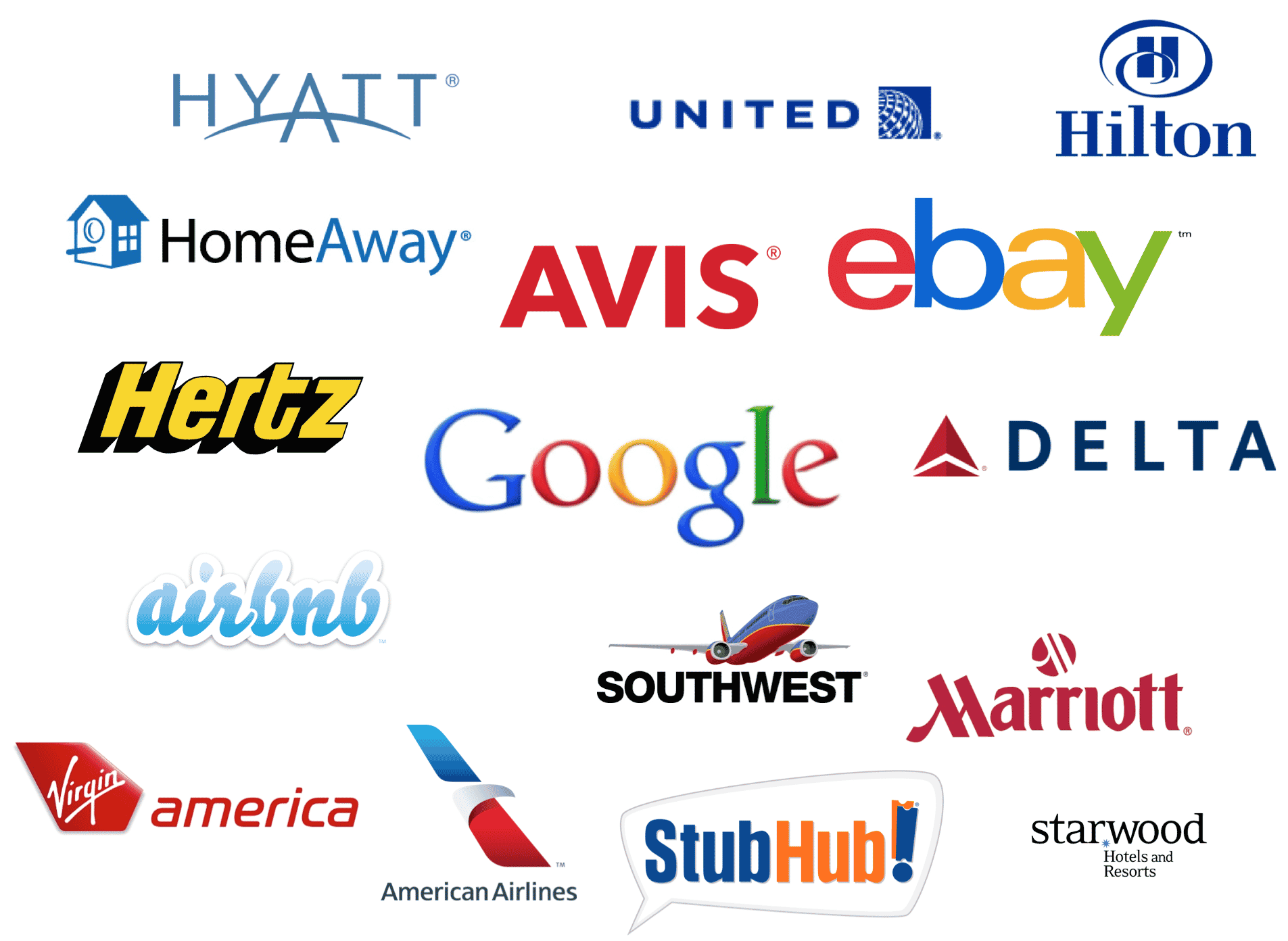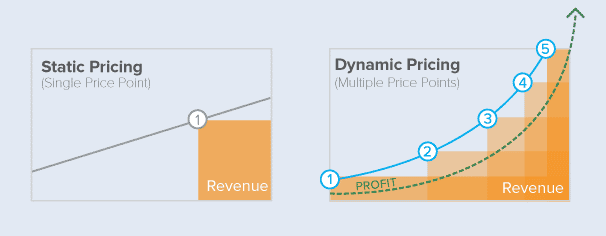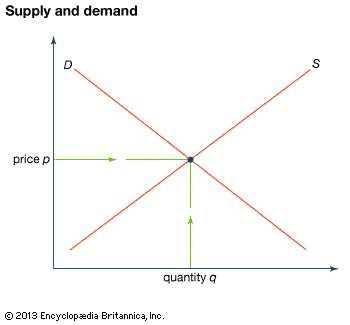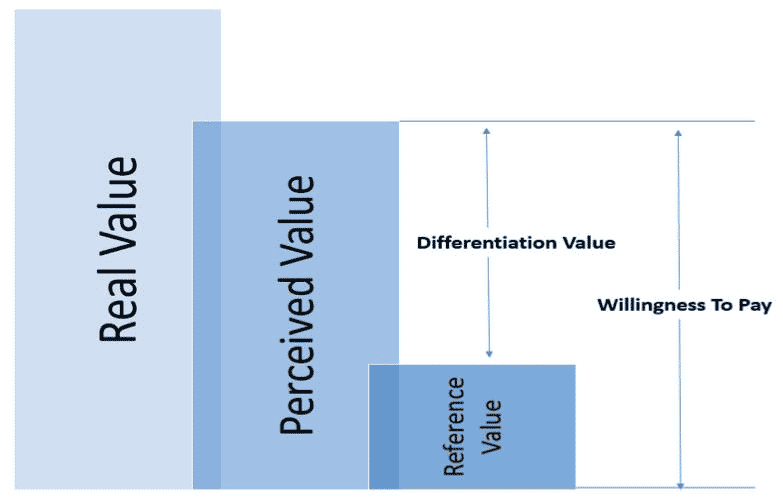
What are the key revenue management components you need to ensure a bright future in revenue management – whether this is in fmcg, airlines, hotels, tourism or B2B?
>Download Now: Free PDF How to Drive Pricing Strategy to Maximise EBIT Growth
Building a career in pricing and revenue management can be a very rewarding experience. But to succeed in this discipline, you need to understand key elements of a revenue manager job description and the revenue management components that drive success. As a career in revenue management can often be less clear than, say, a career in finance or sales.
So, in this article, we will explore the various revenue management components – from strategy, teams, attributes, and operational skills. We assert that a high performing revenue manager needs to understand their value offering to the market. Not only that but also their ability to market it and their sales and pricing strategy.
We believe a career in pricing and revenue management are career paths closely aligned to actually being an entrepreneur and building your own business. And, as such, requires strong commercial skills and a value mindset – the opposite to that, found in traditional finance departments.
By the end of this article, you’ll know what revenue management is, the various skill-sets requirements of a successful revenue manager and revenue management components that drive a successful career.
Table of Contents:
I. Revenue Management Components: The right path to your pricing career!
II. What Everybody Ought to Know About Revenue Management Jobs!
III. What Is Revenue Management? Is This Really Best Practice?
IV. Revenue management: Revenue management vs Dynamic pricing
V. 3 Proven Easy Ways To Beat Revenue Management Team Burnout!
Capability Building Programmes For Pricing & Sales Teams!
Revenue Management Components: The right path to your pricing career! 👞
Is revenue management a good career choice?
Sometimes, we all run into fundamental career development issues which either block us or delay progress. For example, if you are entrepreneurial and ambitious pricing professional but not particularly well-versed in office politics – how do you gain the influence in an organisation to implement your skill set but also reap the rewards you know you deserve? Career development and talent management is a pressing issue in nearly all professional fields. However, we feel it may be an even bigger issue in the pricing community.
Below listed are a few issues that we see commonly impacting revenue managers career path and promotion prospects :
- Understanding of the role of pricing and revenue management in the business – is your understanding of pricing aligned to the organisation you are joining?
- Having the right team, reporting line, mission and executive sponsorship to succeed – are you set up for success or failure?
- Knowing how to execute a strategy in the market and having the resources to back up a strategic plan – are there gaps in capability that could potentially derail strategy implementation and learning?
What Is A Chief Revenue Officer And What Should They Know About Pricing 🧑🏼💼 Podcast Ep. 110!
1. Does your business actually understand what a revenue manager is?
For roles that deliver more profitability and value creation, only a handful of Australian businesses have pricing centred in their commercial management. Companies like US-based Parker Hannifin are few and far between. When seeking to build a career in pricing and revenue management; ask yourself, do you have to start a revenue management function, and if you do; do you have access to the decision-makers required to win that buy-in and implement the change management required? Do you have the right revenue management components to help you build a good pricing career?
You need an analysis to work out the position your current role is in an organisation. And whether you have the influence needed to make the changes that will enable you to demonstrate your value.
In basic terms, if the revenue management components and functions or pricing team is positioned as operational, it’s going to be very hard for you to get a seat at the executive table and drive strategic pricing setting decisions and strategy.
The pricing maturity may be much lower than you first anticipated when you first joined the business. Executives may not always know how to unlock the profit potential of your team. You need a pricing team planning framework to align management on the role of pricing in your business. You also need to know the revenue management components. This will make it easier for you to drive change and reposition yourself and your team in the right way.
2. Is the Reporting Structure right?
Who does your pricing function report to? Is it routed through finance or marketing or is there a senior pricing leader in the business?
To deliver benefits and profit increases, correct positioning of revenue management components and pricing functions are vital.
Many businesses focus on operational issues rather than commercial strategy and growth. In this context, a business may be more wedded to a cost-based pricing strategy and hence making the transition to a value-based system may be more demanding.
3. What is Revenue Management?
“Revenue management is a business process that is designed to optimize the revenue performance of an asset through all market conditions.” – Trevor Stuart-Hill
In order for revenue management components to apply, four criteria must be met:
- Constrained Capacity: fixed inventory (or resources) available for sale
- Perishability: revenue-producing potential of inventory (or resources) diminishes rapidly or instantly
- Customer Segmentation: different customers are willing to pay different prices
- Predictability: ability exists to forecast demand for future points in time
Pricing Recruitment For Pricing Managers!
What do Revenue Managers do? Key elements of a Revenue Manager Job Description
Revenue manager’s primary job then is to generate profitable revenue growth. To do this, they undertake a range of analytical tasks such as: financial analyses (P&L, variance analysis), sales and product mix management, cost drivers (CPI and PPI), price volume and supply elasticities as well as promotional pricing and new product pricing campaigns.
Over the past 2 years, the role of the revenue management function has evolved. Now, revenue management teams complete BAU pricing tasks and analyses (as stated above), but also design new pricing strategies, price architecture and sophisticated promotional campaigns. Many teams are moving away from traditional cost-plus pricing to dynamic pricing and value-based options focusing on the customer and/or shopper usage, and consumption patterns (i.e., customer segmentation, customer insights/market research, real-time shopper data).
On top of analytical tasks, revenue managers have to also demonstrate strong leadership and stakeholder engagement skills. Revenue managers are leaders, mentors, and coaches to the team – all in one. They ensure information flows across different teams and that they clearly understand the vision for pricing in the business.
〉〉〉 Get Your FREE Pricing Audit 〉〉〉
How to become a Revenue Manager
Below is a summary of high performance revenue management components. This list will give you an insight into the capability of high-performing revenue managers:
-
- Create Good Habits – You must work to have a daily routine that makes sense to you, and then stick to it.
- Understand the Data – The main objective is to look at available data and understand what is truly relevant and what’s extraneous.
- Stay Organised – Have everything organised to a point where you can review daily. But don’t spend too much time reading it all.
- Get the Metrics Right – You should have the ability to forecast demand by segment or channel or special event. You need to anticipate that demand and how you are going to manage it.
- Train, Train, Train – Engage in all the offered training through brands and other resources. Then make sure to use those tools and systems effectively at the property level. Work with folks at the property level to understand what they are looking at.
Capability Building Programmes For Pricing & Sales Teams!

What Everybody Ought to Know About Revenue Management Jobs!
Read our blog on what you need to know about Inventory Management Pricing Methods.
Amazon has launched in Australia. The company’s arrival in Australia is predicted to disrupt the Australian retail industry yet again. It has also impacted revenue management jobs market here in Australia too.
Taylor Wells has seen a significant increase in revenue management jobs across major Australian retailers.
Amazon’s entry in Australia represents the beginning of a new kind of retail pricing experience for Australian consumers. An experience creating new and more challenging revenue management jobs in Australian retail businesses.
In this article, we will discuss two innovative revenue management techniques that Amazon Australia are likely to use to win more customers and boost revenues in Australia. We will then discuss how Amazon Australia has disrupted revenue management jobs in Australia for the better.
Revenue management jobs implement decoy pricing
Amazon Australia’s strategic objective is to be the go-to place. Especially for the latest and greatest products across as many categories as possible.
But how are they going to maximise margins in highly competitive categories? At the same time keep consumers happy, loyal and feel they’ve got a bargain.
One way may be through decoy pricing.
There has been a lot of conjecture about Amazon’s decision to remove its significant freight discounts and faster delivery in Australia.
It is quite likely that Amazon will introduce additional freight charges and discounts within carefully developed pricing options. This is to entice Australian consumers to buy high-value products that generally people go in-store to buy. Items such as TVs, gadgets, iPhones, etc.
What is decoy pricing?
Dan Areily describes the pricing decoy effect in his book Predictably Irrational. He describes the following subscription offer from the Economist:
Dan Ariely conducted a study with 100 MIT students. He found that the middle option acted like a decoy driving people towards a higher price point. Only 16 chose option A (Economist.com subscription) and 84 chose option C (Print & web subscription). He found that pretty much nobody chose the middle option (Print subscription).
Also, he found that when there was a middle option in place, most people favoured the higher value offer. He later validated his findings with a follow-up study.
In the second study, Ariely tested only 2 options (Economist.com & Print & Web subscription) to assess the importance of a middle option. His second trial reiterated the importance of a middle option in a pricing table. He concluded that when people are given two options to compare between, they would veer towards the cheaper option because the comparison becomes much easier.
He also concluded that when people were given a middle option, and each described varying value, people were more likely to choose the preferred and dominant option because they were more difficult to compare and contrast.
Amazon may choose to implement decoy pricing to increase online sales for high-value products such as electrical, hardware and software.
Decoy pricing is perfect for online pricing tables.
Plenty of informed and uninformed buyers are still out there ready to buy the latest gadgets and devices. It is difficult to compare between these offers – even bright MIT students struggle to compare and contrast value options.
Calibrating discounts and freights charges + adding and or removing these discounts and freight charges from some options and not others may help drive consumers towards the dominant option.
Revenue management jobs use price anchoring
Amazon’s entry to Australia has brought about a change in revenue management jobs. New revenue management jobs are becoming much more focused on fundamental human principles as well as fundamental revenue principles.
Amazon Australia knows, for example, that people don’t really perceive a product as “cheap” or “expensive”. Value tends to be relative.
The idea of value as relative is key to revenue management jobs. Revenue management teams pay a great deal of attention to how customers respond (price sensitivity) to different offers and price points. They also use this data to challenge popular pricing practices and produce dynamic pricing models.
Our perception of value is based on a fundamental human principle. People naturally compare associated products when they are estimating the worth and the value they will get from a given product or service.
The anchor price is crucial to estimating value. Amazon takes a great deal of care to scientifically test their retail prices. That is to see which price point is the most profitable anchor price to influence a customer’s price comparison journey.
Anchor prices are tactical in nature but related to the business wider price positioning strategy (low, mid, high).
Amazon spends a lot of time working out the anchor price to give consumers the right starting point from which to compare and contrast between products and retailers. Amazon Australia’s refined understanding of how we determine value will no doubt underpin the form, structure and content of their new site. This includes revenue management jobs focused on setting anchor prices using methods and analytics like price profitability elasticity.
New revenue management jobs will also measure the relativity between products and keystone products in the same and similar categories.
As a consumer, you do not know all this pre-work and analyses has been given to each and every price point and product range. The purpose of new revenue management jobs is to ensure that products and price points are encouraging us to select the retailers preferred and dominant options and optimising revenue.
As a consumer, all you know is that you want value for your money. You go online or in-store focused on getting what you want at a price you think is reasonable and fair. You want to avoid getting ripped off and want to feel you are making the best decision possible. Amazon Australia knows this too and pays great deal attention to how we avoid risk when we buy.
A fundamental human principle called risk aversion.
How you determine the value and avoid risk when you buy something like a TV tends to follow a fairly predictable path:
You might look at two different models of TV and then compare their features and prices. One product might be 50 inches and cost $2481 while the other might be 48 inches and cost $956. In the process of comparison, you may, like most people, think that the $956 TV offers the best value because you are paying less for a TV that’s only 2 inches smaller. However, that thought process is exactly what the retailer predicted. They used framing and anchoring techniques to make you think and feel this way.
For example, they anchored you to $2481 TV (a profitable starting point), so that the $956 TV looked like a bargain in comparison. You feel that you were getting a bargain and feel relieved that you saved some money and avoided making a mistake.
But this is not the end of the story, because the retailer’s major competitors know this too. They also know that you are going to compare product prices between major retailers just to make sure that you are not going to get ripped off. They have used a technique called game theory to work out the odds of them winning your business in a range of different scenarios over their competitors.
Retailers know that when you make a buying decision, you are weighing up a series of value options and trade-offs.
Retailers use frame and anchoring techniques to nudge you into buying from them. They use game-theory to work out their odds of winning your business over their competitors under different conditions. They have probably done a fair bit of web scrapping analysis as well to find out the price points offered by all their major competitors for the same or similar products.
Many retailers choose 1 or 2 competitors to benchmark their prices. This is called a competitive pricing strategy.
Many retailers implement competitive pricing to lure price-sensitive buyers to their site and win their business from their competitors. Retailers know that you are comparing between products on their site and their competitors’ site – they certainly are anyway.
They offer a slightly lower price to win more customers and then they frame and anchor their prices and products in a way to entice you to a more expensive purchase without you even realising it. They use a combination of revenue management techniques to bypass your thinking brain (logic), avoid your risk aversion, and upsell you to their preferred options and products.
Be sure to look for these tricks next time you go online shopping.
Pricing Recruitment For Pricing Managers!
Implications
Many Australian retailers and associations are concerned that Amazon’s pricing and revenue management system will place even more pricing pressure on department stores and retail chains.
It is clear from the Amazon launch, that Amazon wants to be the go-to place for the latest and greatest products for pretty much everything.
The Amazon launch will bring about even more new revenue management jobs and innovative revenue management practices in Australian retail in-store and online.
New revenue management jobs include strategic price positioning strategies, customer value discovery, yield management, price profit elasticity, dynamic pricing / tactical discounts, price promotional strategies and additional charges.
A quick review of the Amazon Australia’s website shows a healthy number of bargains on offer, but nothing excessive.
Prices for high tech gadgets, luxury TVs, cameras are in line with most Australia retailers, and on occasion significantly more expensive.
A key task for many new revenue management jobs now involves updating pricing across a large product portfolio to ensure alignment with Amazon. No one wants exposure for unnecessarily complicated or unethical pricing.
Antiquated systems, simplistic competitive pricing strategy and a cost-plus culture, however, are holding many Australian retailers back from capturing any significant or new revenue opportunities – no match for Amazon Australia.
Australian retailers are busily trying to re-dress any pricing discrepancies in their product portfolios. Many new revenue management jobs involve a complete review of the price positioning strategy, product hierarchy and price data architecture.
Some Australian retails are developing ranging strategies – introducing new products in the range – to offset margin erosion and create new revenue opportunities.
Other Australian retailers are keen to test and trial more sophisticated pricing and revenue management techniques (discussed above). The aim is to win and retain business over the Christmas period and beyond.
Chief executive Richard Murray from online and instore retailer JB Hi-Fi says:
“We want a better way to understand our customers online and instore together – that would be really powerful.”
New revenue management jobs and expertise will be crucial to testing customer databases and unlocking new insights from customer data.
New revenue management jobs will also be key to helping Australian retailers drive revenue growth during times of intense competition and disruption.
〉〉〉 Get Your FREE Pricing Audit 〉〉〉
Conclusion
Amazon Australia provides a compelling case for why Australian retailers need to eliminate popular but outworn revenue management jobs, ideas, processes, and strategies to create new revenue management jobs and opportunities for innovation and growth.
The Amazon Australia’s launch, alongside the rise in revenue management jobs in Australia indicates that there’s still ample pricing and revenue opportunities for online and in-store Australian retailers.
However, years of everyday low-price strategy and cost-plus pricing analytics have limited many Australian retailer’s options to play a more strategic game, including the opportunity for price and revenue optimisation.
Capability Building Programmes For Pricing & Sales Teams!

What Is Revenue Management? Is This Really Best Practice?
What is revenue management? More Australian businesses across retail, airlines and energy have been exploring “flexible pricing opportunities” which consumers maybe a little less pleased with.
Over the past 2-3 years, the airlines, entertainment, travel, hospitality and retail sector (online and brick and mortar) have been testing and trialling dynamic pricing options on us. This basically means they see how we respond to offers from different prices for the same item every time (they have already asked what is revenue management).
Have you noticed this when you have been buying something online?
At the moment, dynamic pricing operates at a fairly crude level where consumers buying online for a MAC computer is sometimes offered more expensive prices than PC users.
However, flexible, dynamic pricing is going to become much more sophisticated in no time at all. Prices will be more personalised because we’re being tracked all the time and our data is being stored and analysed.
Toby Walsh, professor of artificial intelligence at the University of New South Wales, says the continued rise of AI-driven dynamic pricing is inevitable.
Google, for example, tracks a billion shop visits every year and has access to 75 per cent of all credit card activity in the US. Not only do they track your online activity but your offline activity as well.
Currently, all these businesses and more (listed below) are using dynamic pricing and consumer data with little to no backlash from consumers.
What is revenue management?
The execution of dynamic pricing in the Australian marketplace is a major development in commercial pricing. It started off in the airlines and now widely adopted in our retail sector too. It can be classified under revenue management. However, it is not uncommon for a business to implement fixed and dynamic pricing at the same time.
Revenue management (RM) refers to the collection of strategies and tactics firms use to scientifically manage demand for their assets, products, services or perishable inventory or capacity.
Unlike pure price management, revenue management has a much heavier inventory component to it. Pure price management looks at product mix but does not really deal with inventory allocation or controls in the same way or to the same extent that a true revenue management function does.
Revenue management, conversely, does not have the cost picture to deal with perishable or time-constrained inventory (inventory that go away have a shelf life and airlines seats, media space, car rental).
The marginal cost of the next sales is much lower. So they don’t really have to factor costs in as much as B2B price management function. For example, a plane must take off – the fixed cost for the plane to take off are the same.
Online platform businesses like Amazon have been moving away from fixed pricing. That is, to test and trial dynamic pricing across the retail sector. Dynamic pricing is traditionally based on the laws of supply and demand. Typically, prices fluctuate for certain products and services like airlines fares, hotel rooms and ride-sharing services like Uber. When there are spikes in demand, and the charges go up.
New developments in artificial intelligence and virtual assistants are radically changing the relationship between retailers and customers using price optimisation software and algorithms.
Price Optimization software is driven off regression models that calculate how demand varies at different price levels. Then combine that data with information on costs and inventory levels to recommend prices that will improve profits.
Latest price optimisation software has moved a step beyond supply and demand and asset allocation levels. And is now combining forecasting data with customer data and information sources. This is to help pricing and revenue management teams predict customer willingness to pay.
Customer data used by pricing algorithms is gathered from sources such as loyalty cards, individual online shopping behaviour, price-sensitivity analysis, postcodes and prior behaviour.
Understanding the demand profile for hard durable goods and supply-constrained assets is fast becoming the norm in high performing B2B and B2C pricing and revenue management teams.
However, it is very difficult to chart a course for the future or bring about change merely by analysing history. Pricing processes based purely on an analysis of their past behaviour can never change the behavioural profile of customers.
Price Optimization models have been used to tailor pricing for customer segments by simulating how targeted customers will respond to price changes with data-driven scenarios.
Given the complexity of pricing thousands of items in highly dynamic market conditions, modelling results and insights help to forecast demand, develop pricing and promotion strategies, control inventory levels and improve customer satisfaction.
Pricing Recruitment For Pricing Managers!
Conclusion
Over the past 5 years, there has been a clear move towards flexible pricing, algorithmic pricing and automation. Indicators suggest a customer-focused pricing process is likely to become the prevailing catalyst to setting and achieving optimal prices for all our shopping and grocery needs.
Yet, transforming customer habits and experiences is still largely limited to cause and effect analysis – i.e., via demand profile analysis. Of course, we need to incorporate scientific proof into our price models. However, a scientific approach to understanding customers has its limitations. Tracking customers as they buy seems to break a moral code of conduct and has ethical considerations.
Pricing and revenue management teams need to figure out where data-driven limitations lie. Imagine pricing processes that possibly don’t exist yet to get closer to developing optimal price points that influence behaviour and drive profitability.
As a pricing or revenue manager or general manager commercial, do you think dynamic pricing undermines a largely unspoken moral tradition?
〉〉〉 Get Your FREE Pricing Audit 〉〉〉
Did you know?
Traditional revenue management did not start off deriving price points based on demand at all. Only 10-15 years ago, the airlines industry was still allocating and assigning fixed price levels to seats in advanced of them being sold. There was very limited real-time analytics going on and no accurate view on demand. Inventory allocation and pricing were largely manual and predefined.
Once the allocation of seats was sold at a lower price level, another allocation of seats at a higher price level would begin to sell. This fixed allocation and pricing system was not based on real insight into consumer demand. It only gave the impression that the prices for seats were going up when really it was just another bucket of seats being sold.
Revenue management now has evolved since then and is now much more about price optimisation as well. Not just a static view: i.e., let’s just fill 10 seats at x price.
Revenue management now seeks to understand the overall demand profile of the system. And then optimises prices using price optimisation software against that demand profile. A different way to approach the same problem.
How do you think your customers would respond to dynamic pricing – do you think they’d complain or even notice?
How do you think dynamic pricing impacts your business’s brand or price positioning in the market?
Can you answer “what is revenue management to your boss”?
Capability Building Programmes For Pricing & Sales Teams!

Revenue management: What is the difference between revenue management and dynamic pricing anyway?
A lot more executive meetings today are focusing on how to improve pricing strategy using advanced or dynamic pricing and revenue management system. Many meetings, however, reveal some gaps in understanding about what these terms mean. How to use them and why pricing teams apply them to generate more revenue and margin across different customer segments.
To help you avoid making a pricing faux pas during your next meetings, I thought I’d write an article providing an explanation on the subtle and important similarities and differences between revenue management and dynamic pricing models. To do this, I will compare and contrast each term. Then discuss how we can apply each concept most effectively to drive profitable growth for the business and its wider value ecosystem.
Introduction to Value Culture 💡 Podcast Ep. 96!
Background on revenue management
Revenue management (RM) began in the airline industry (and of course expanded into related travel and hotel revenue management) in the ’70s. It was introduced by British Airways when they experimented with differentiated fare products. BA (or at that point BOAC) introduced a static revenue management method called differential pricing to stimulate demand for seats that would otherwise fly empty.
BA was one of the first airlines to differentiate the price of airline flight tickets by offering customers capacity-controlled “Earlybird” discounts.
Dynamic pricing is an advanced revenue management method that also fits under the broader revenue management umbrella. Like static revenue management methods, dynamic pricing began in the airline industry.
Dynamic pricing was introduced in the early ’80s after American Airlines invested millions in DINAMO (a next-generation capability that stands for Dynamic Inventory Optimization and Maintenance Optimizer).
Dynamic pricing methodology has caught the attention of IT software vendors and businesses alike. Because of its vast potential to maximise revenue and balance capacity utilisation. Lufthansa is one of the first airlines to implement advanced price estimation software.
Revenue management, therefore, is like an umbrella term that includes both dynamic and more static revenue management methodology.
The mission of the Revenue Management discipline
The revenue management discipline’s overall mission is maximising profits through market demand forecasting and mathematical optimisation of price and inventory. However, there are subtle differences between related terms and methods under the broader revenue management umbrella:
RM strategy (in the airlines) focuses on inventory planning: i.e., how many flights should there be, and at what times.
Dynamic pricing focuses on managing demand across available inventory (fill planes). By tactically adjusting pre-established price levels, fences and metrics over time and across multiple segments and products.
Yield management focuses on maximizing the income from those buyers considered the most price inelastic.
Revenue management methodology focuses on tactical pricing for those buyers considered as price sensitive.
The rationale for using revenue management methodology explained
The rationale for using either static, differential pricing and or dynamic pricing should depend on your business plan, pricing outcomes and overarching pricing and revenue management strategy. Both RM methods should in theory help companies to sell the right product to the right customer at the right time for the right price.
Revenue Management is essentially about optimising the volume of attendance for a perishable good, as well as maximising yield. Such as filling planes, as well as maximising income from price-insensitive customers. This includes reducing prices to stimulate low demand as well as increasing prices to exploit high demand. However, when a pricing team increases prices during peaks in demand they are focusing on improving yield (i.e., Yield Management).
Businesses need high-calibre pricing and revenue management teams with the right revenue management components. To implement advanced tactical pricing strategies and tactics across multiple segments. It is difficult to source pricing talent with the technical knowledge, commercial acumen and leadership capability to apply the correct combination of static and dynamic pricing methods.
How to apply revenue management methods in the market
The application of revenue management methodology can be both static and dynamic (as mentioned above). The application of static RM methods (like the BA example above) generates different prices based on varying price-performance levels. On the other hand, the application of dynamic pricing generates different prices over time. They do this by making ongoing tactical adjusts of pre-established price levels, value fences and metrics.
A sophisticated dynamic pricing application enables pricing teams to charge different amounts for the same seat at different times in the sales or pricing cycle (i.e., segment of 1).
A static RM method like differential pricing enables pricing teams to charge different amounts based on how price performs on different days of the week or cycle.
Pricing teams implementing dynamic pricing applications use well-designed pricing and volume data sets based on vast amounts of transactional data (i.e., Big Data) and pricing algorithms (i.e., pricing and inventory regression analyses).
Pricing teams implementing static differential pricing applications use historical internal and competitor price and volume data derived from external informed sources. Often these data sources have gaps and businesses tend to make assumptions about future demand using aggregate-level data.
How do revenue management methods influence consumer behaviour?
Pricing teams tend to use static revenue management applications when they want to influence customers’ behaviours to prices. And want customers to see what the price differentials are.
Pricing professionals tend to use dynamic pricing applications when they do not want to draw customers’ attention to subtle changes in prices.
〉〉〉 Get Your FREE Pricing Audit 〉〉〉
What are the challenges and constraints?
The key challenge is the perishability of inventory. Like for instance, you can no longer sell the ticket again once the plane takes off. Also – tickets for short term events like the 2018 World Cup – will collapse in value in a few hours. For example, after a big game (not just at a different time of year).
The revenue management components and methodology discussed is essentially tactical.
The pricing strategy, value fences, floors and fences and the price-setting process should be designed well in advance of setting each price level.
Price levels and yield management strategies need to be based on sales and consumer analysis. Also, fully tested before implementing in the market.
You need high calibre and trained pricing, revenue management and demand forecasting teams to apply constraints (or value fences). This is to stimulate demand, understand market dynamics and navigating competently in restorations and during price cycles.
Capability Building Programmes For Pricing & Sales Teams!
3 Proven Easy Ways To Beat Revenue Management Team Burnout! 🤯
As you read this article, it is likely that someone on your pricing and revenue management team is suffering symptoms of burnout. They are likely contemplating leaving their job unlikely to return to the team.
Heavy workloads, high stakes implementations, wide-scale change programs and heavy deadline pressure are a fact of life for pricing and revenue management team leaders and teams.
Yet, burnout is a topic that pricing teams, businesses and forums rarely discuss in detail or know how to deal with effectively.
It is common for HR and line managers to cite desirable traits like resilience, grit and persistence when describing high-performance pricing and revenue management team functions.
But what happens when the relentlessness of always having to be on, ready to fix issues lead to stress and ongoing anxiety?
What if the constant expectation to deliver and drive results becomes yet another workplace stressor?
How do you make sure your resilience and energy levels are not depleted and your health and happiness do not deteriorate?
What Is A Chief Revenue Officer And What Should They Know About Pricing 🧑🏼💼 Podcast Ep. 110!
Taylor Wells believes it is important for pricing and revenue management team leaders to notice, acknowledge and deal with the symptoms of burnout in the best way possible.
When leaders and general commercial managers don’t recognise when situational factors cause their teams to feel stressed, overwhelmed and fatigued, they’re actually shutting them down and creating an environment of loneliness and isolation.
As we draw quickly to the Christmas holidays, it is probably a good time to recap over the year. Then think about how you have led people through change and managed stress and pressure at work in 2020.
By the end of this article, you will have a toolkit to manage your burnout symptoms and take charge of your well-being at work in 2021.
Read on if you would like to learn some preventive strategies to help you counteract your particular pattern of burnout.
What is burnout and why every revenue management team leader should care?
Employee burnout costs (not including recruitment costs for new employees) the Australian economy approximately $14B a year, according to an article by Derek Parker: ‘Employee overload is bad for business.’
Over the past 10 years as a talent strategist, career coach, researcher, and educator, we’ve noticed an increased number of the revenue management team and individuals mention burnout.
We’ve heard many stories on how pricing teams and revenue managers are struggling to cope with growing pressure to drive profitability in highly competitive and stressful markets and business environments.
I’ve helped many revenue management team and clients design development program that help them to manage the causes and symptoms of burnout.
But, to really understand the symptoms of burnout, it would be best to consider the real-life case study of Sue, a senior revenue management professional from a rental car business based in Sydney.
Back at the office, Sue was facing the same impossible workload, untenable conflicts, and growing pressure to perform.
She explained to me in one of our sessions: “Pricing and revenue management is a competitive field and I’m a competitive person, which can skew the way you see reality. In the past, I didn’t dare say no to people. Because I was afraid that if I did, they would think I was not effective. I was so anxious about losing all the good work my team has worked so hard to deliver. And I just kept taking on more and more tasks until the workload became unmanageable. I really should have said no.”
Sue had a “scarcity” mindset and believed that her options and influence was limited. And that people in the business did not trust or respect her.
Sue had been promoted to a senior managerial position and was implementing new market strategies and analytics. She was also facing internal resistance from key stakeholders and at best grudging compliance from other teams and divisions.
A lot of people believed that she could perform well in this new role. Yet, she felt tethered to her new managerial title—the firm was prestigious, the pay was good.
Sue was weighing up whether her values and lifestyle meant more to her than the perks.
She was not sleeping well and was always worrying about work and what other people thought of her.
Sue also found herself daydreaming a lot about quitting and starting her own business.
She was unhappy that she did not tell people what she really thought during meetings. Likewise, she was disappointed in her inability to admit her own mistakes.
“I did try to push back a couple of times,” she told me.
“Then, when I heard that marketing was starting to recommend and implement new price promotions without me even knowing. I felt like I had completely lost the battle.”
One marketing manager even told Sue’s boss that she was disrupting business progress.
It wasn’t long before Sue’s revenue management team was assigned basic trials and operational tasks.
This was a complete downer for Sue and her team. She felt like punished for speaking out. She became more anxious and worried that her new team would leave.
“Some members of my team had already disengaged. I felt that I had let them down and that they didn’t believe in me anymore. The team were under constant pressure, and from every direction – sales, marketing, finance the executive team,” she explained.
“My revenue management team were busy putting out fires. A lot of times they were called urgently to fix a crisis, but it was not actually a crisis at all but a complaint about us.”
Sue believed that a big part of their job was helping stakeholders think differently about pricing, including putting challenges into perspective.
“An effective revenue management team shouldn’t mean being a servant,” Sue said.
“We were taking calls and e-mailing at 11 at night and 6 in the morning, and during the weekend.”
“We were all getting carried along in the current yet not achieving our goals and sticking to our pricing roadmap.”
3 Symptoms of Revenue Management Team Burnout
A 2013 ComPsych survey of more than 5,100 North American workers found that 62% felt high levels of stress, loss of control, and extreme fatigue.
Fatigue is the central symptom of burnout. It includes profound physical, cognitive, and emotional fatigue that undermines people’s ability to work effectively and feel positive about what they’re doing.
Scepticism represents an erosion of engagement. It is a way of distancing yourself psychologically from your work.
Powerlessness refers to feelings of incompetence and a lack of achievement and productivity.
Research has also linked burnout to many negative physical and mental health outcomes. Including coronary artery disease, hypertension, sleep disturbances, depression, and anxiety, as well as to increased alcohol and drug use.
Pricing Recruitment For Pricing Managers!
3 Ways to Beat Pricing Team Burnout
- It’s critical to individual and pricing team success to restock your physical and emotional energy. Without the right energy levels, you will not have the capacity to focus on your individual and team goals. Your attention and focus rely on you prioritising good sleep habits, nutrition, exercise, socialising.
If exhaustion is a key problem, ask yourself which tasks—including critical ones. You could delegate to free up meaningful time and energy for other important work.
Let 2021 be the year you regularly practice things that develop your self-awareness and well-being.
- To really change hearts and minds, you need to take a close look at your mindset and assumptions. Do you have a fixed or growth mindset? Do you think people have the capacity to change, grow and develop? Or do you judge people too quickly and view potential and ability as fixed? What aspects of your situation are truly fixed, and which can you change?
Altering your perspective can protect you from the negative impact of even the most inflexible aspects of your work life and thinking. Are there ways to reshape your job in order to gain more control or to focus on the most fulfilling tasks?
- Target high-value activities and relationships that still trigger unhealthy stress. Build a network of positive relationships to manage the more toxic relationships in your life. This involves resetting the expectations of colleagues, clients, and even family members. How much are you willing to take on and what trade-offs are you prepared to make? What are your ground rules for working with other people and all that entails? What can you do to make team dynamics more positive and energising?
You may get pushback, but don’t get discouraged by haters and cynics; they are just working through their own issues (or so detached from others that they cannot see the harm they actually cause).
People might think the sudden change in you is inauthentic. And may even judge you for trying to make your life better. Stay strong; consistency is key.
Make these changes a part of your life. So that you really believe that it is important to improve your life at work.
Never forget the importance of prioritising and protecting your health (mental and physical).
As Michael Bunting discusses in his book: The Mindful Leader: it is important to be open and honest with yourself and others in order to get past a self-defeating pattern.
〉〉〉 Get Your FREE Pricing Audit 〉〉〉
Conclusion
Burnout is a serious problem for pricing and revenue management team members.
It is commonplace for pricing and revenue management teams to feel overwhelmed and stretched thin.
Too many pricing and revenue management teams are suffering in silence.
High pressured situations may be part of the job, but feeling burnout doesn’t have to be a long-term sentence.
You cannot be a high performer without a toolkit to manage your state and prevent negative patterns of behaviour.
Over Christmas, take time to think about your specific burnout profile. So that you know where you need the most help and support.
Situational factors are the biggest drivers of burnout in revenue and pricing teams.
We highly recommend that leaders work closely with their teams to think through changes at the job or organisational level. In order to address all the underlying causes and issues of team burnout.
See our blog on Stress is an issue in the pricing community for more coping strategies for stress. Check out our blog on pricing strategies – and how big business can cause and avoid failing pricing strategies and toxic culture.
Click here to get a free guide on pricing teams and capabilities.
For a comprehensive view on maximising growth in your company,
Download a complimentary whitepaper on How To Drive Pricing Strategy To Maximise EBIT Growth.
Are you a business in need of help to align your pricing strategy, people and operations to deliver an immediate impact on profit?
If so, please call (+61) 2 9000 1115.
You can also email us at team@taylorwells.com.au if you have any further questions.
Make your pricing world-class!



